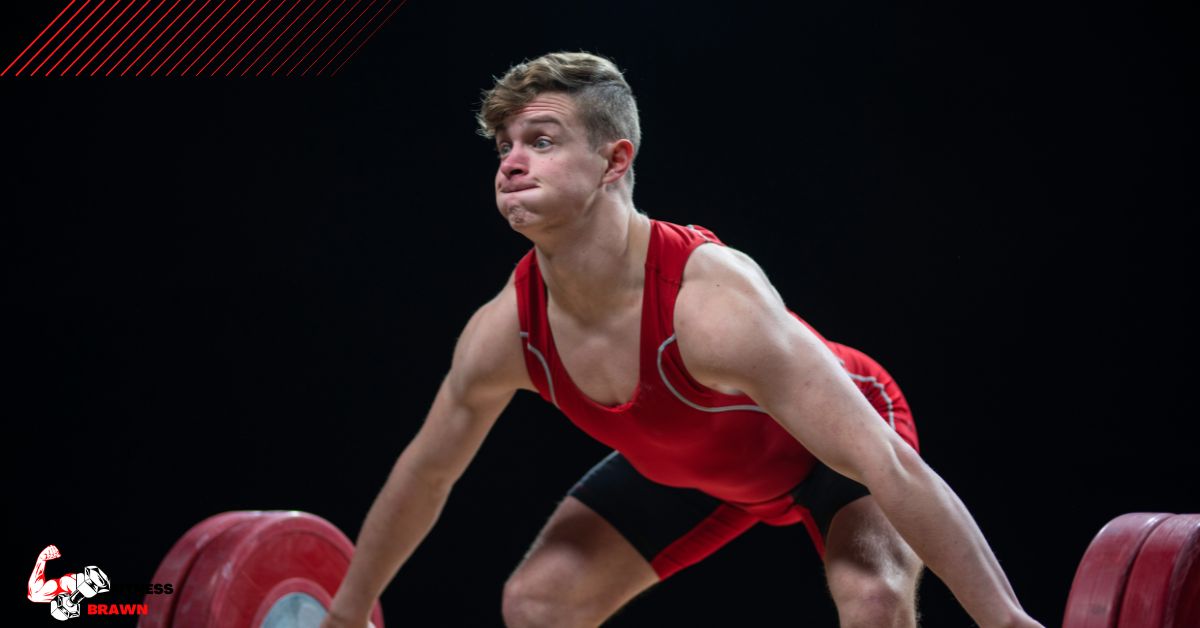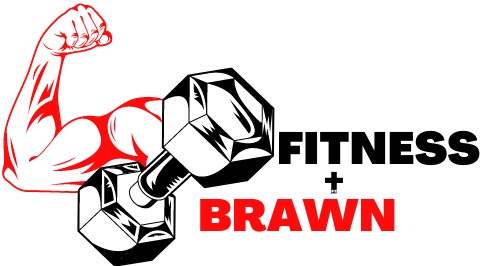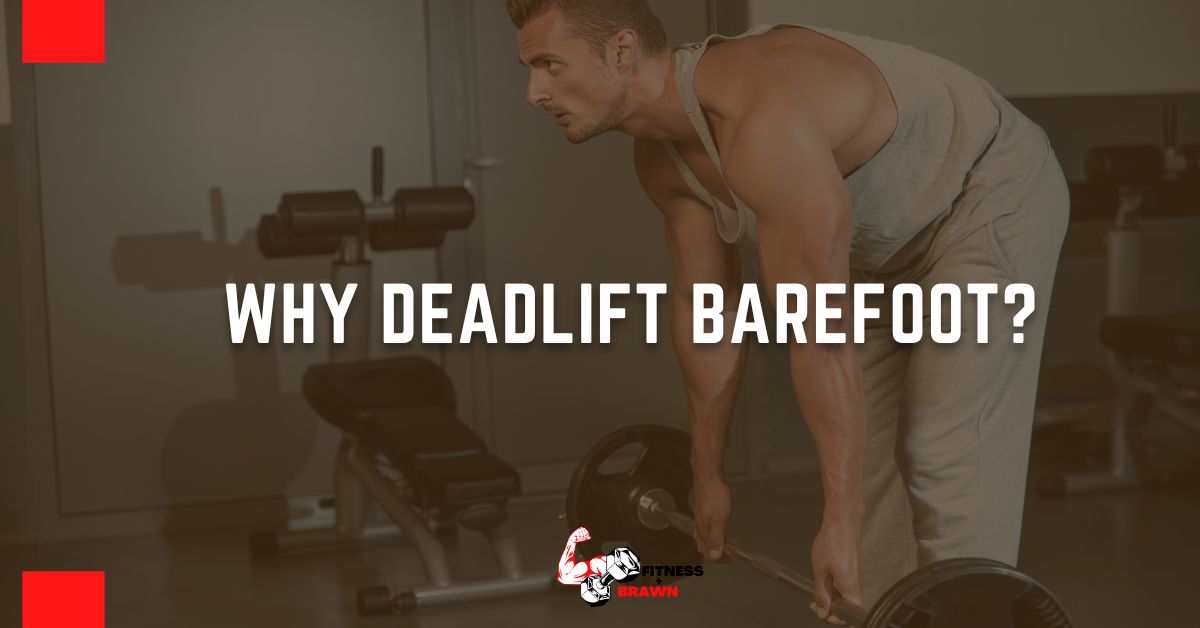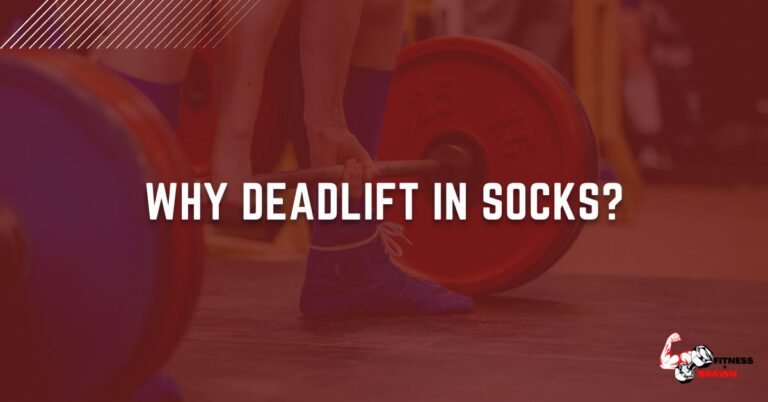Why deadlift barefoot?
It is a topic that is often debated in the fitness world.
Some people believe that deadlifting barefoot provides many benefits, while others believe that it is unnecessary and can even be dangerous.
So, what is the verdict?
For years, we’ve been told that the best way to lift weights is with a heavy pair of sneakers and a lifting belt.
But what if we told you that barefoot is the best way to deadlift?
Keep reading to learn more about the benefits of going barefoot during your workout.
What is Deadlift? – Overview
The deadlift is one of the most basic and essential strength training exercises.
It works the entire posterior chain of muscles, which are the muscles responsible for moving the weight back and forth.
The posterior chain consists of the glutes, hamstrings, calves, and low back.
The deadlift also works the muscles in the front of the body, such as the quads, abdominals, and shoulders.
In addition, deadlifts help to improve posture and increase core stability. All of these benefits make the deadlift an exercise that should be a part of any strength training program.
Although it is a simple exercise, there are a few key points to keep in mind to lift safely and effectively.
First, keep the spine in a neutral position throughout the entire range of motion. Second, engage the lats by keeping the bar close to the body.
And finally, drive through the heels while exhaling at the top of the lift.
Following these simple tips can maximize your results with this important exercise.
Why Deadlift Barefoot
Two main reasons you should consider ditching your shoes when you hit the gym are improved balance and better form. Let’s take a closer look at each of these benefits.
Improved Balance
When you wear shoes with thick soles, it’s difficult to feel the ground beneath your feet.
This can make it difficult to keep your balance, particularly when lifting heavy weights.
When you’re barefoot, however, you have a much better sense of proprioception, or, in other words, you can better control your body in space.
This improved sense of balance will help you maintain good form and avoid injury.
Better Form
In addition to improving your balance, going barefoot will also help you maintain proper form. That’s because shoes with thick soles can alter your natural gait, and that can lead to bad habits when lifting weights. Wearing shoes with thin soles or going barefoot ensures that you maintain proper alignment and prevent strain on your joints.
Now that we’ve gone over some of the benefits of deadlifting barefoot let’s look at how to do it.
That being said, other benefits of deadlifting barefoot are often overlooked. These benefits include improved grip strength, increased range of motion, and improved proprioception.
Improved Grip Strength
One benefit of deadlifting barefoot that is often overlooked is improved grip strength. When you wear shoes with thick soles, the padding between your foot and the floor can make it difficult to grip the floor and maintain your balance.
Wearing shoes with thin soles or going barefoot ensures that you have a better grip on the floor and can easily maintain your balance. This improved grip will help you lift heavier weights and increase your strength over time.
Increased Range of Motion
Another benefit of deadlifting barefoot is an increased range of motion. When you wear shoes with thick soles, the padding can limit the range of motion in your ankles and feet. This can lead to joint pain and stiffness.
Wearing shoes with thin soles or going barefoot will help you increase your range of motion and prevent joint pain. This increased range of motion will help you perform the deadlift with proper form and prevent injury.
Improved Proprioception
Proprioception is the ability to sense the position of your body in space. This is an important ability for athletes because it helps them maintain balance and avoid injury.
Wearing shoes with thick soles can make it difficult to sense the position of your feet and ankles. This can lead to joint pain, stiffness, and a loss of balance. Wearing shoes with thin soles or going barefoot will help you improve your proprioception and avoid injury.
Now that we’ve gone over some of the benefits of deadlifting barefoot let’s look at how to do it.
How to deadlift barefoot

I remember when I first started deadlifting. I was really nervous because I had no idea what I was doing.
But one thing that helped me feel more confident was lifting barefoot.
It sounds a little crazy, but a few benefits to lifting without shoes exist.
For one, it helps you connect with the ground and keep your balance better.
And secondly, it allows you to move more freely and naturally.
This is why so many people are starting to lift barefoot these days.
It can help you lift heavier weights and achieve better results.
So next time you hit the gym, give it a try.
That being said, let's look at how to deadlift barefoot.
When you're ready to start your set, approach the barbell and stand with your feet hip-width apart.
If you have any trouble balancing, you can place your feet slightly wider than hip-width apart.
Once you've found your balance, bend at the hips and grip the barbell with an overhand grip.
Your hands should be about shoulder-width apart.
From this position, lift the barbell off the ground and bring it to your hips.
Then, reverse the motion and lower the barbell back to the ground.
That's one rep!
Start with a light weight and perform three sets of eight to 12 reps.
As you get stronger, you can increase your weight and reps.
Tips for beginners who want to try deadlifting barefoot
Deadlifting barefoot may seem daunting, but it can be simple and even enjoyable with a little practice.
Here are a few tips for beginners who want to try deadlifting barefoot:
1. Start by doing some research. Many great resources are available online that can help you learn about the proper techniques for barefoot deadlifting. Make sure you understand the basics before you give it a try.
2. Find a comfortable place to train. If you're not used to lifting weights without shoes, it's important to find a training environment that is comfortable and supportive. Look for a gym or fitness center that has padded floors and ample space around the weight-lifting equipment.
3. Warm up properly. As with any type of exercise, it's important to warm up your muscles before you start lifting. A good warm-up routine should include some light cardio and stretching exercises. This will help prepare your body for the more strenuous activity of lifting weights.
4. Start light. Don't try to lift too much weight at first – you'll only end up frustrating yourself. Instead, start with lighter weights and work your way up as you get stronger.
5. Be consistent. The key to seeing results from any type of workout routine is consistency. If you want to get better at barefoot deadlifting, make sure you stick with it and train on a regular basis. Soon enough, you'll be hoisting those heavy weights like a pro.
The importance of form when deadlifting barefoot

Whether you're a seasoned weightlifter or just starting out, proper form is essential for any exercise.
This is especially true for the deadlift, an exercise that can be extremely beneficial but also dangerous if done incorrectly.
Many people choose to deadlift barefoot in order to get a better grip on the floor, but this can make it even more difficult to maintain proper form.
Without the support of shoes, it's easy to lose your balance and put undue stress on your lower back.
That's why it's important to be extra careful when deadlifting barefoot and make sure that you keep your back straight and your shoulders square.
With a little practice, you'll be able to master the perfect form and get the most out of this great exercise.
What to do if you experience pain or discomfort while deadlifting barefoot?
As any serious weightlifter knows, deadlifting is essential to any workout routine.
However, deadlifting barefoot can sometimes be problematic, as it can lead to pain and discomfort in the feet and toes.
If you experience pain or discomfort while deadlifting barefoot, you can do a few things to help alleviate the problem.
First, make sure that you are using the proper form. If you are not using the proper form, you are more likely to experience pain and discomfort.
Second, try using a thicker mat or something similar to cushion your feet and toes.
This will help to reduce the amount of pressure on your feet and toes and help to prevent pain and discomfort.
Finally, if all else fails, consult a doctor or physical therapist to see if there are any other options for alleviating your pain and discomfort.
Deadlifting is an important exercise, but it is important to do it safely in order to avoid injury.
Alternatives To Deadlifting Barefoot
Anyone who's been to a gym has seen someone deadlifting barefoot.
It looks intense, makes a lot of noise, and builds serious strength and power.
But is it the best way to lift?
Here are some alternatives to deadlifting barefoot that can help you build strength and power while minimizing the risk of injury.
One alternative is to use lifting shoes.
These shoes have a raised heel that helps to improve your biomechanics and increase your lifting force.
They also provide stability and support, which can help to reduce the risk of injury.
Another alternative is to use a lifting belt.
These belts wrap around your waist and help to stabilize your spine during the lift.
Belts can also help you to generate more force by allowing you to brace your abdominal muscles more effectively. Finally, you can also use chalk to improve your grip on the bar.
Chalk absorbs sweat and provides a better grip, which can help you lift more weight safely.
So, if you're looking for alternatives to deadlifting barefoot, try using lifting shoes, a lifting belt, or chalk.
These options can help you build strength and power while minimizing the risk of injury.
FAQs about deadlifting barefoot
Can I deadlift barefoot if I'm not used to it?
If you're not used to deadlifting without shoes, starting light and working your way up is important. You don't want to try lifting too much weight at first and end up injuring yourself.
What should I do if I experience pain or discomfort while deadlifting barefoot?
If you experience pain or discomfort while deadlifting barefoot, make sure you are using the proper form and try using a thicker mat or something similar to cushion your feet and toes. If all else fails, consult a doctor or physical therapist.
Deadlifting is an important exercise, but it is important to do it safely in order to avoid injury.
Read more: Bodybuilding
Final thought
So there you have a few compelling reasons to leave your shoes at the door the next time you hit the gym. Give barefoot deadlifting a try and see for yourself how much better your form and balance can be. You just might be surprised at how much stronger you are without all that extra weight on your feet.





